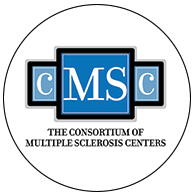1. What is Clinically Isolated Syndrome?
Clinically isolated syndrome (CIS) is often a sign of multiple sclerosis and the term refers to the first episode of neurologic symptoms experienced by a patient. It usually lasts at least 24 hours and it is related to an inflammation or loss of the myelin lining of the nerve cells (called demyelination) in the central nervous system. A monofocal episode of clinically isolated syndrome occurs when the patient experiences only one sign or symptom, which is caused by a single lesion.
In comparison, a multifocal episode of clinically isolated syndrome refers to when a patient experiences more than one sign or symptom due to lesions in more than one location. These symptoms may include an attack of optic neuritis accompanied by numbness or tingling in the legs. The National Multiple Sclerosis Society also explains that these episodes are usually not related to fever or infection, and patients often experience a full or partial recovery after it.
2. Who Suffers Clinically Isolated Syndrome?
Similarly to multiple sclerosis, clinically isolated syndrome is twice to three times more likely to occur in women than men while about 70% of patients are an average of 30-years-old. But it can occur to both genders and at any age. It is important to understand that being diagnosed with clinically isolated syndrome is not a synonym to being diagnosed with multiple sclerosis. When physicians detect brain lesions similar to the ones that cause MS in a magnetic resonance imaging (MRI) scan, then there is a 60 to 80% risk of later developing MS. However, it is also possible for a patient with clinically isolated syndrome not to have brain lesions and the risk decreases to 20%.
“According to the 2010 revisions to the diagnostic criteria for MS, the diagnosis of MS can be made when CIS is accompanied by MRI findings (old lesions or scars) that confirm that an earlier episode of damage occurred in a different location in the CNS. As MRI technology becomes more advanced, it is likely that the diagnosis of MS will be made more quickly and there will be fewer people diagnosed with CIS,” explain the society. “An accurate diagnosis at this time is important because people with a high risk of developing MS are encouraged to begin treatment with a disease-modifying therapy in order to delay or prevent a second neurologic episode and, therefore, the onset of MS.”
3. What is the Difference Between Clinically Isolated Syndrome and MS?
There are differences between multiple sclerosis and clinically isolated syndrome. The symptoms of the two conditions are similar, including numbness or tingling in the arms, legs, or face, slurred speech, blurred vision or other eye problems, muscle weakness, vertigo or dizziness, problems with balance or walking, stiffness or muscle spasms, fatigue, pain, poor memory, depression or mood swings, and bladder, bowel, or sexual problems. In addition, MS and CIS both occur when demyelination interferes with the normal function and transportation of nerve impulses from the brain, which causes neurologic symptoms.
However, this does not mean that the two are the same. Clinically isolated syndrome refers to the first episode of symptoms while a patient with multiple sclerosis experiences more than one episode. An MRI of a patient with CIS shows damages in only the area that caused the symptoms, but an MRI of an MS patient demonstrates multiple lesions in different parts of the brain. In addition, if the clinically isolated syndrome is accompanied by specific findings on an MRI that reveals other episodes occurred in the past, then the physicians can confirm the MS diagnosis as stated by the National MS Society referring to the 2010 revisions to the diagnostic criteria for MS.
Learn more about multiple sclerosis here.
Multiple Sclerosis News Today is strictly a news and information website about the disease. It does not provide medical advice, diagnosis or treatment. This content is not intended to be a substitute for professional medical advice, diagnosis, or treatment. Always seek the advice of your physician or other qualified health provider with any questions you may have regarding a medical condition. Never disregard professional medical advice or delay in seeking it because of something you have read on this website.
By Leonor Mateus Ferreira












